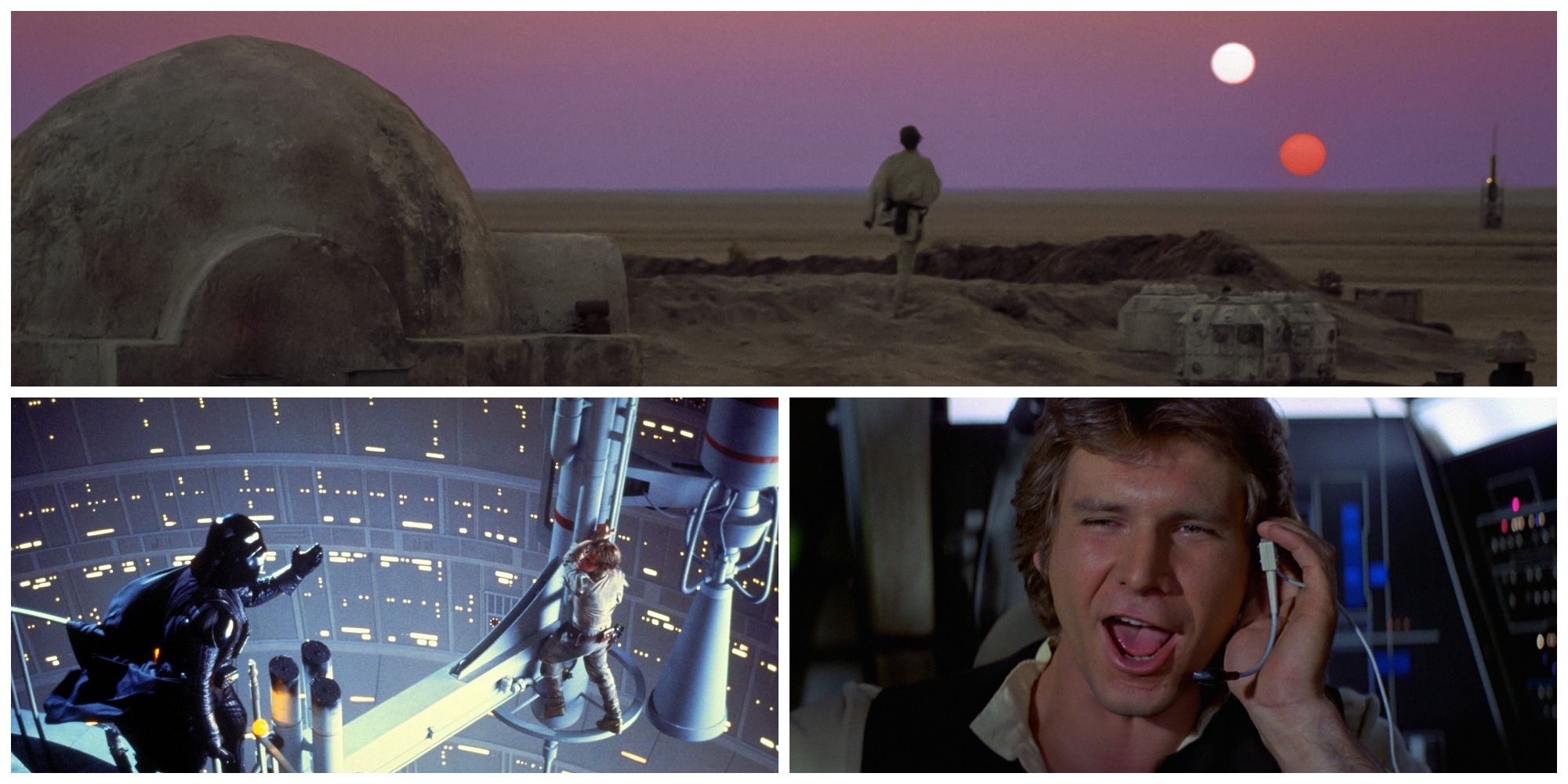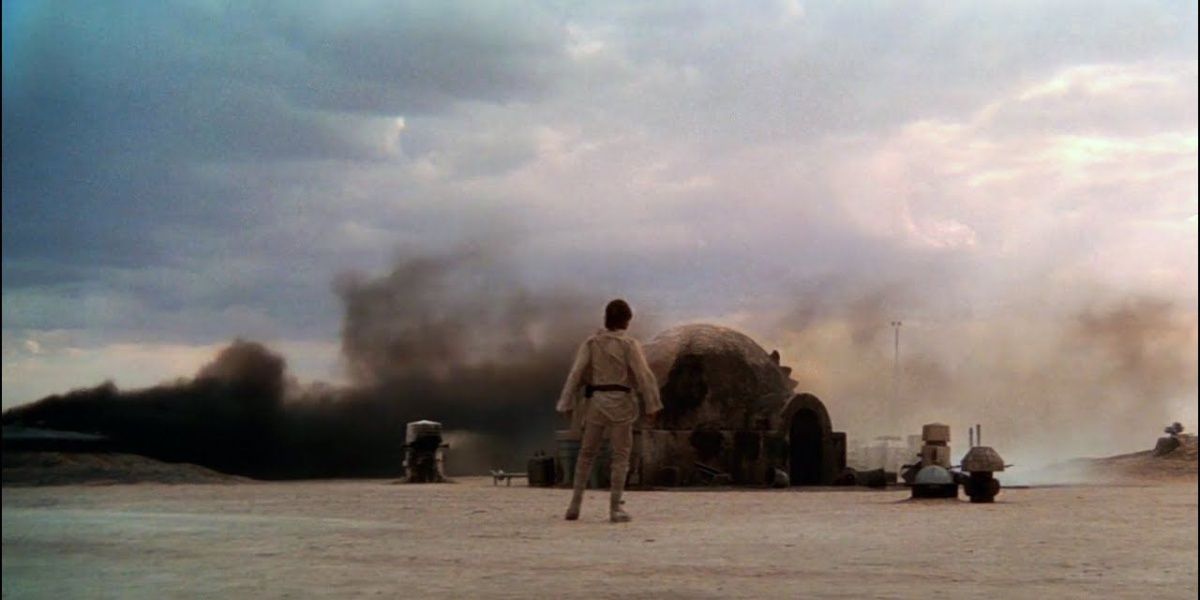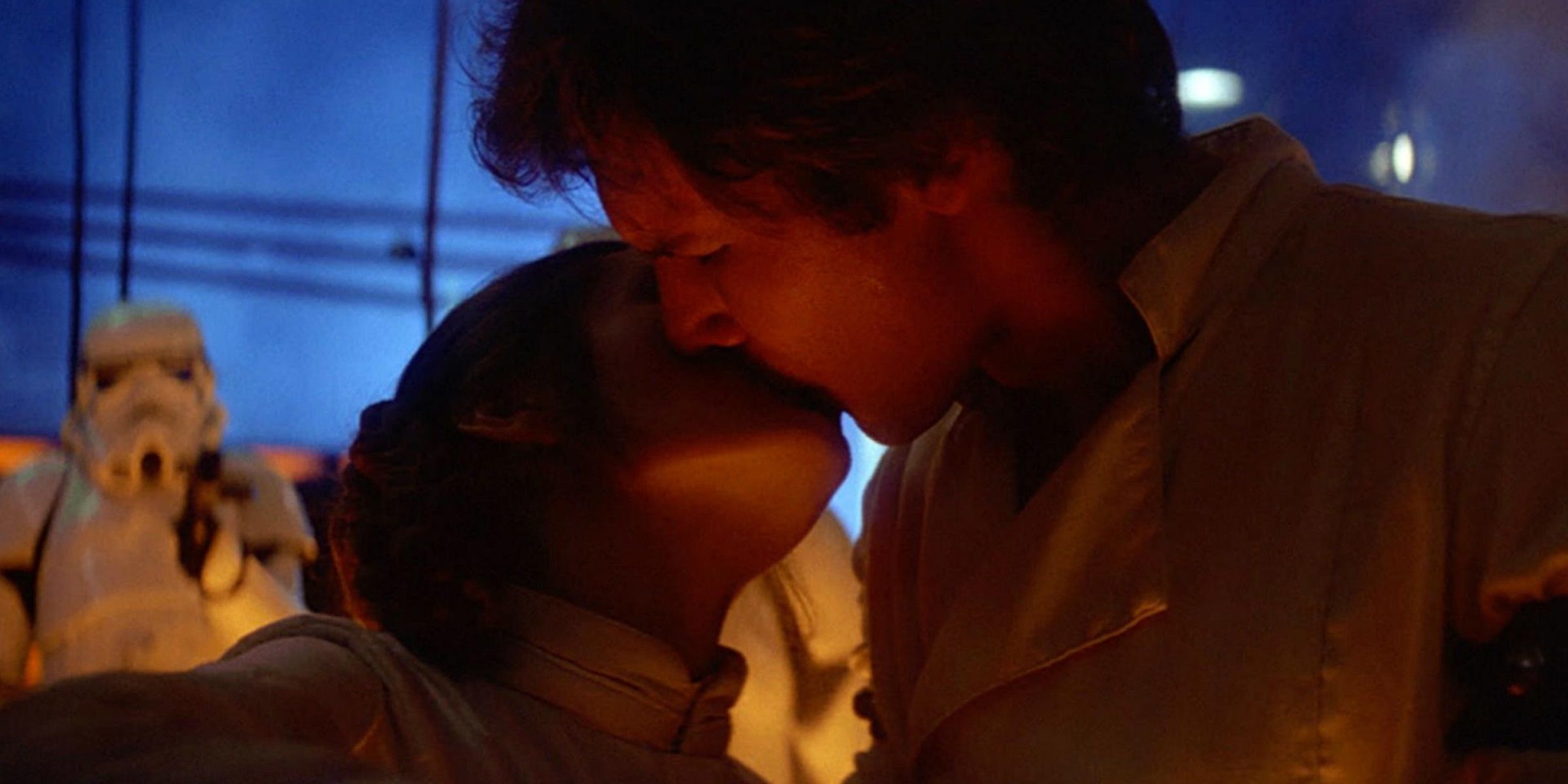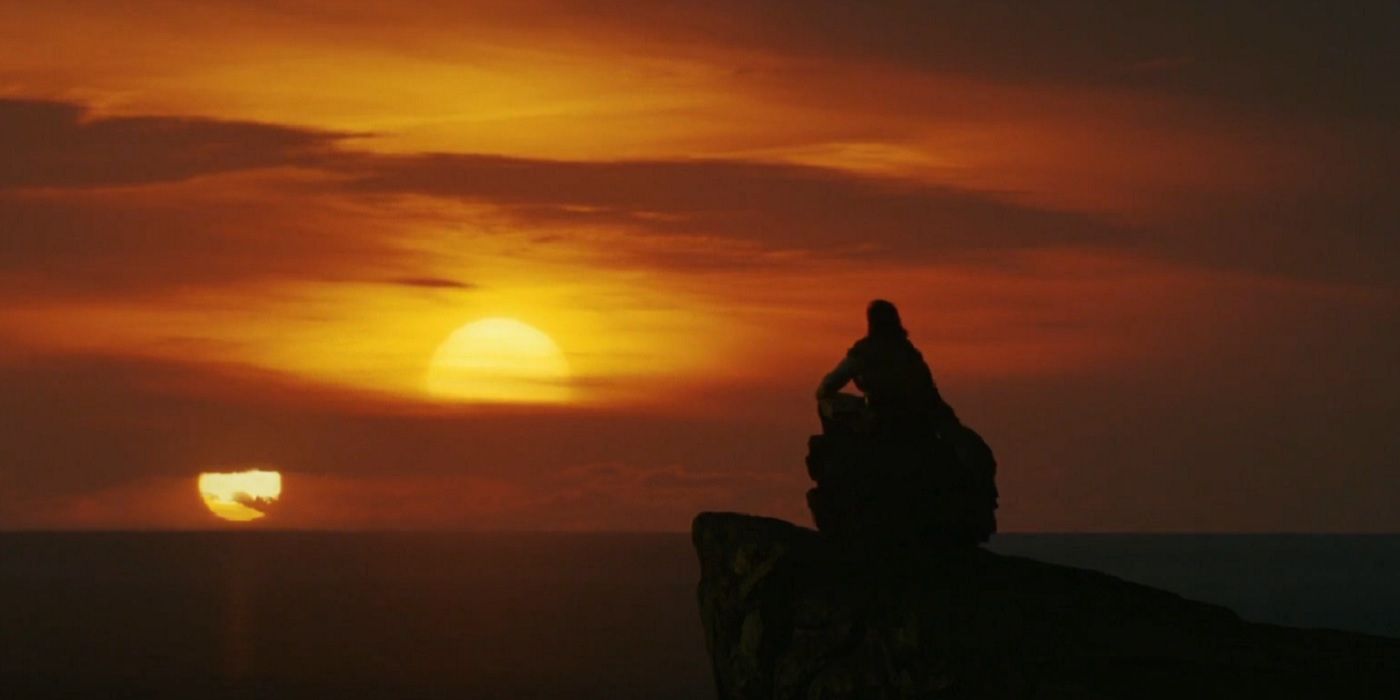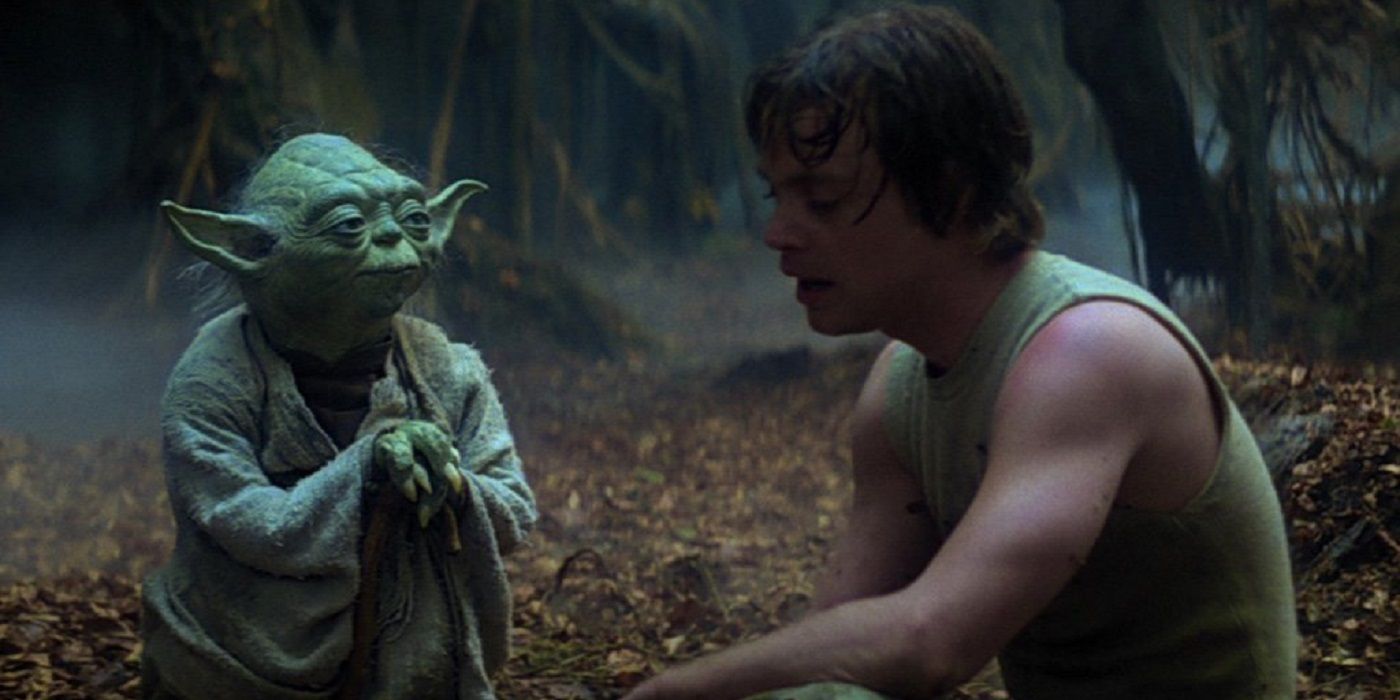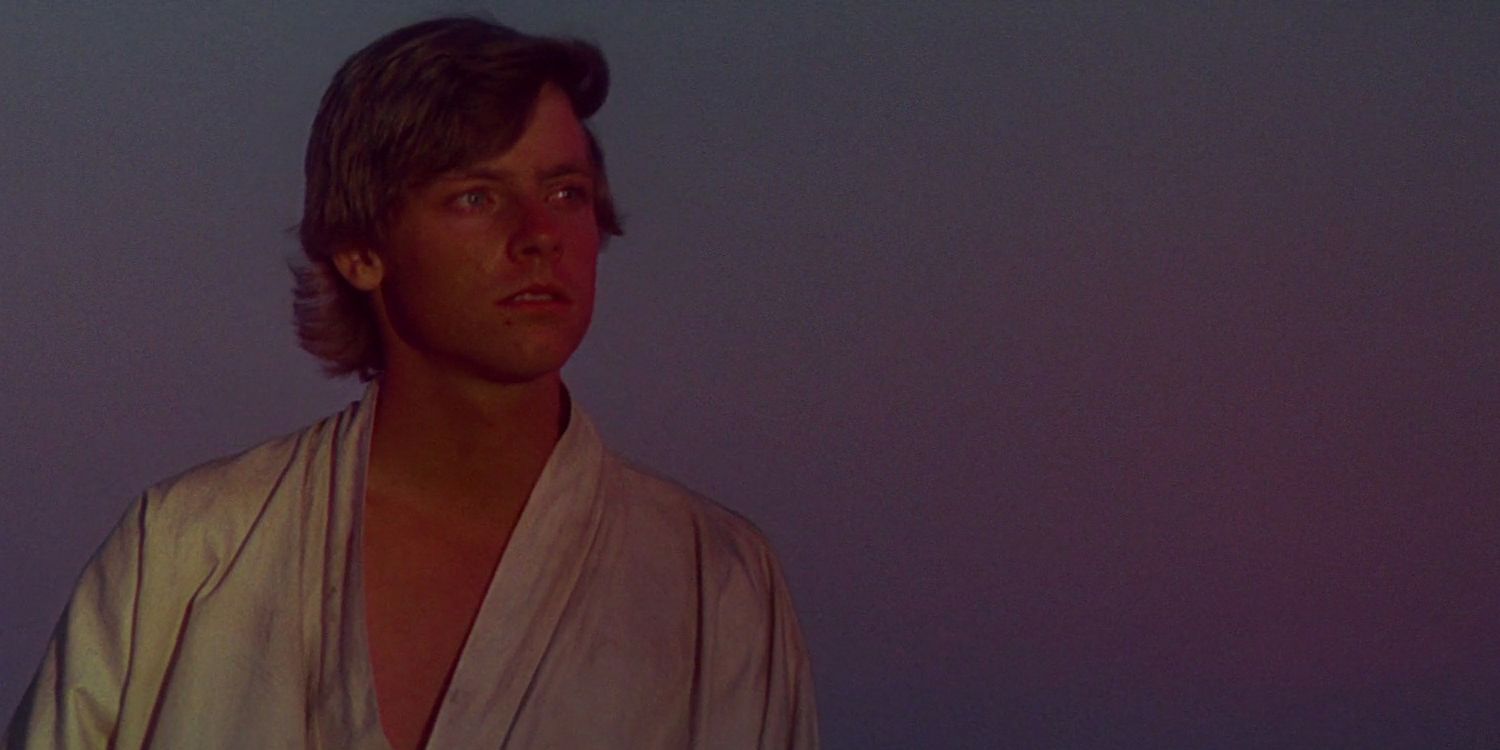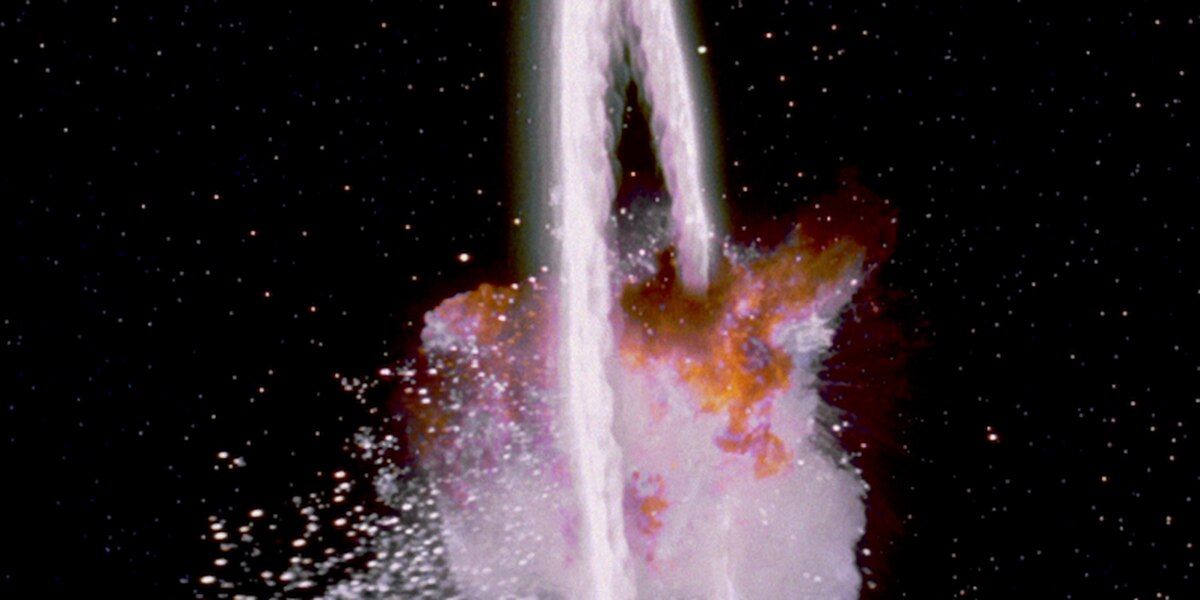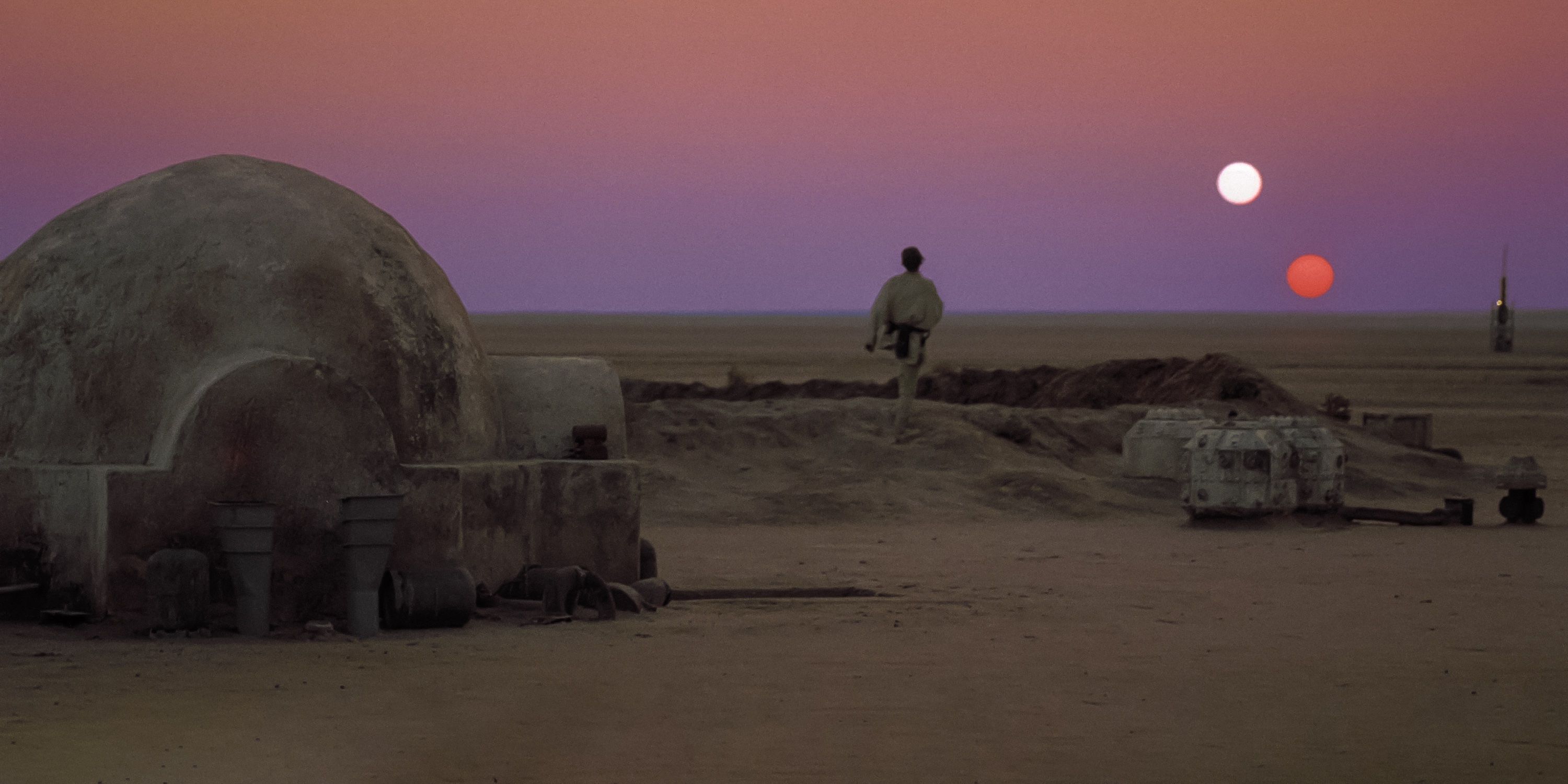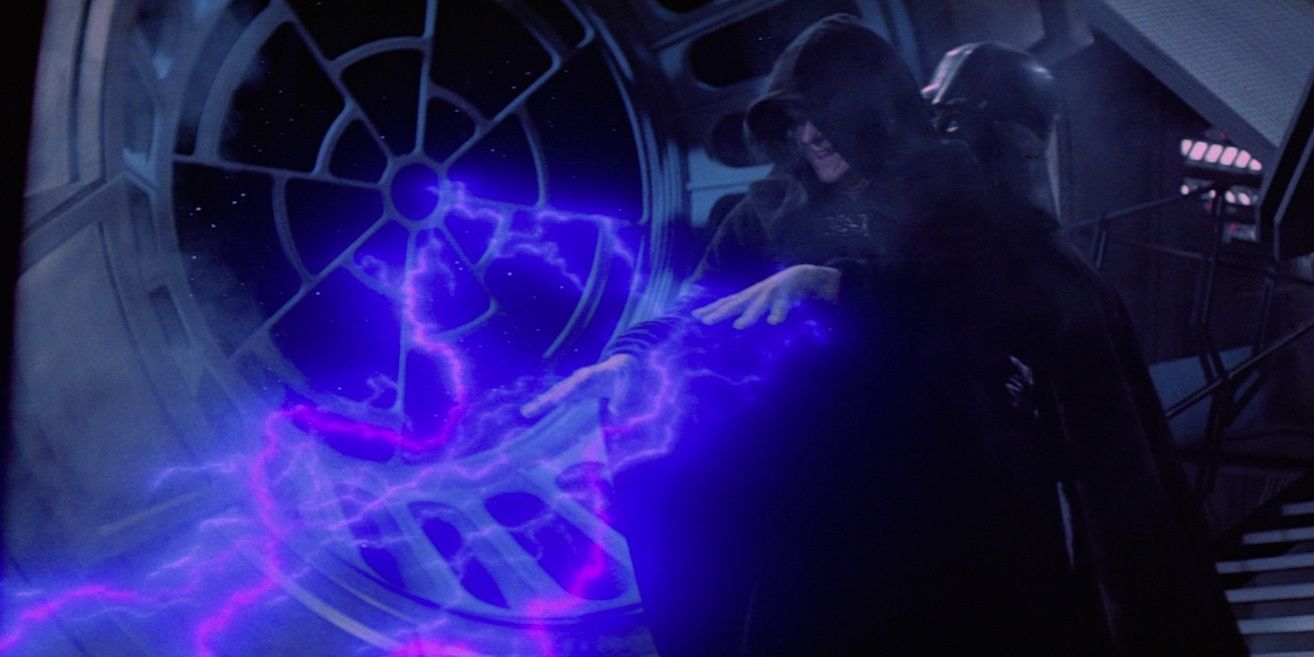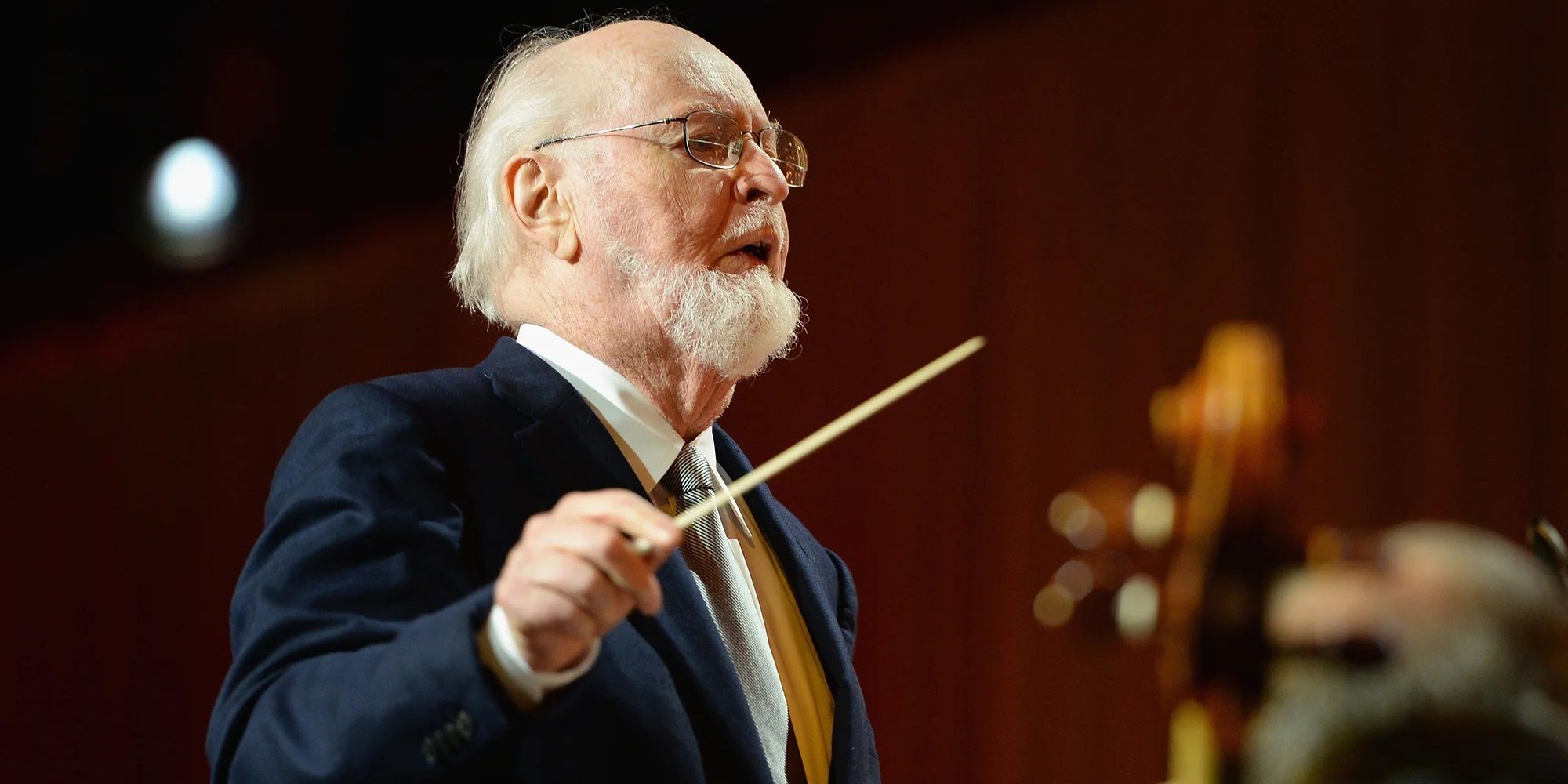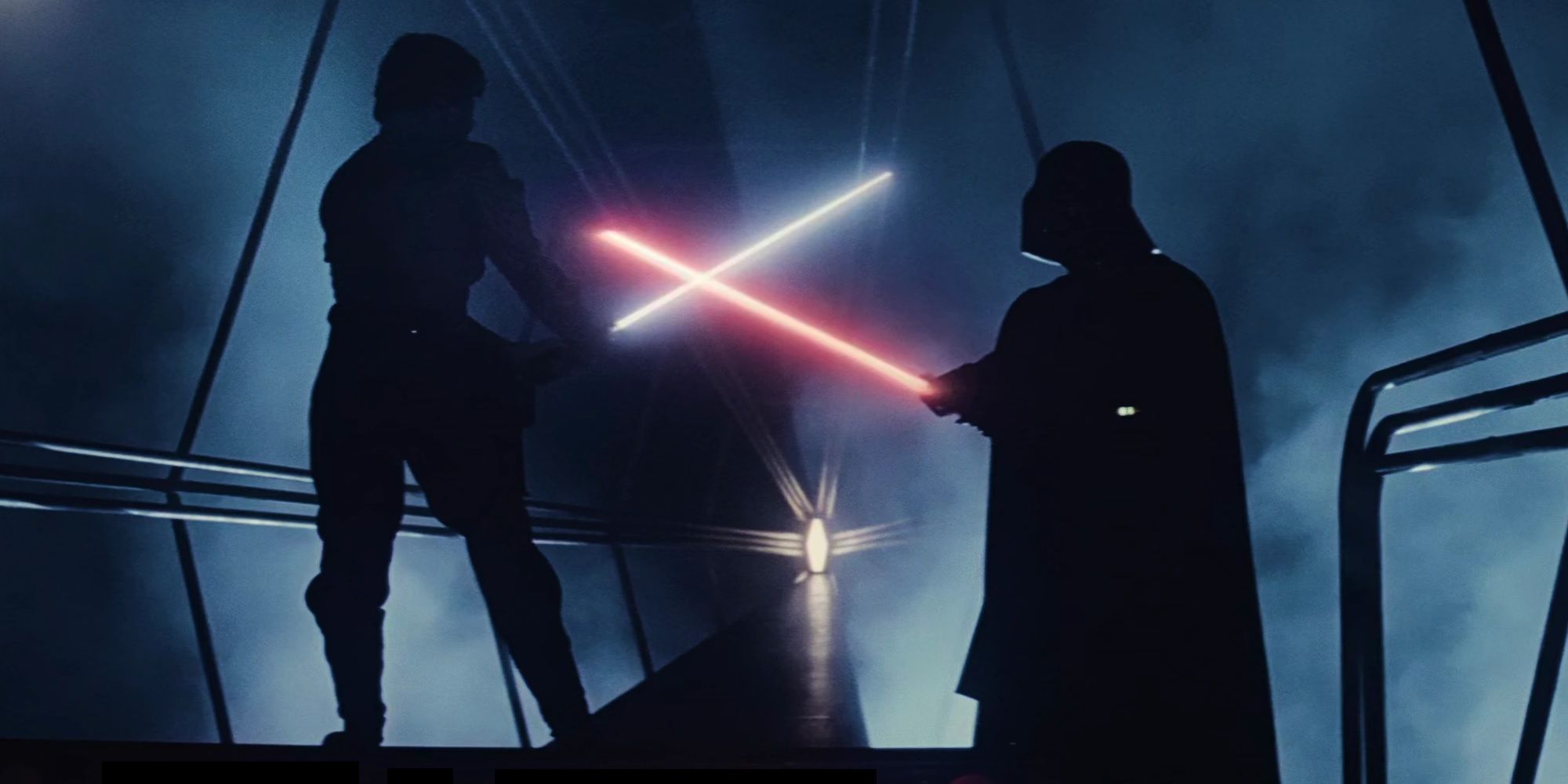The pop culture landscape changed entirely in May of 1977 when George Lucas released Star Wars, ushering in a new era of blockbuster cinema and kicking off perhaps the greatest franchise on the planet, as well as one of the best cinematic trilogies of all time. To this day, the original Star Wars trilogy is passed down to children and children's children, and it remains as beloved as it was when the series concluded in 1983.
One of the defining moments in the trilogy, and a focal point of the entire Skywalker saga, is the famous binary sunset, a scene which some, perhaps unexpectedly, would call the very best of the trilogy, and there is certainly an argument for that. But, there are also some colossus contenders for that crown.
Binary Sunset: Calm Before The Storm
The binary sunset comes at a crucial time in-universe, as well as narratively for the film. It eases in the second act of the film and is perhaps the last moment of calm before a whirlwind of events occurs for the characters.
After looking out on the twin suns Luke finds Obi-Wan, the homestead is burned, they meet Han and Chewie and leave Tatooine, and the rest of the movie rolls on from there. This moment where Luke is gazing out at the sunset is a moment of peace, of contemplation before everything changes, it is a turning point and a scene for fans to sit there in awe to prepare for what is to come.
Contender: "I Love You." "I Know."
It is hard to argue against The Empire Strikes Back being the very best that not only the original trilogy has to offer in terms of feature films, but the franchise as a whole, having a slew of excellent scenes that could challenge the binary sunset.
The scene on Cloud City where Han is frozen in carbonite is an iconic—and fear-inducing for those who do not know Han's fate. Not only is it visually striking, but Han and Leia are excellent, giving perhaps the most well-known exchange in the trilogy with Harrison Ford's improvised line.
Binary Sunset: Hindsight
In 1977, it would be difficult to come out of seeing A New Hope for the first time and immediately appreciate the scene with the suns after your mind has just been blown by a fantasy space opera like no other, but, over the years, the scene's stock has only increased.
Seeing how crucial the image has become over the years only improves the scene upon rewatch. It is something you look forward to that can put you in a state of awe and make you think about all of the moments in Star Wars' forty-plus year history in which the image has been used.
Contender: Yoda Trains Luke
Going back to The Empire Strikes Back, the film introduced a few of Star Wars' most beloved and iconic characters, not least of whom being Yoda, whose scenes with Luke on Dagobah all stand out as excellent.
Perhaps the very peak of what the Dagobah storyline has to offer is one of the last scenes with Luke training. It highlights Luke's emotion, his doubts, and his immaturity, as well as Yoda's wisdom, with some unbelievable quotes from the Jedi Master, and, of course, the lifting of the X-wing out of the swamp.
Binary Sunset: Cinematography
It is a pretty simple point, but the fact of the matter is Tatooine's sunset is an absolutely gorgeous sight, brilliantly shot by A New Hope's cinematographer Gilbert Taylor, with phenomenal work from the production designers and visual effects team.
It is such an astounding image, something ingrained in the mind of every Star Wars fan that immediately connects them to the franchise. Mark Hamill helps make the short scene with his innocent gaze out to the two suns, and it is simply beautiful, and not just for its deeper context.
Contender: Han's Return & The Destruction Of The Death Star
Going with another A New Hope Scene, it is impossible to talk about the best moments, scenes, and sequences of the original trilogy without talking about the trench run.
We're specifically referring to the final scene of the sequence: Vader is on Luke's tail, time is running out for the rebels, Luke is the last hope, Obi-Wan tells him to use the Force, Han returns with a "Ya-hoo!" to deal with Vader, and Luke saves the Galaxy. It is pulsating, enthralling, and epic, and it's the perfect representation of the adventure and heroics promised by Star Wars.
Binary Sunset: The Meaning
In its forty-plus year catalog of content, there truly is an aspect of Star Wars for nearly everybody to love, and a lot of that comes from the emotion that a moment, image, scene, or moment can inspire, and the meaning of it to the individual.
The binary sunset is a short scene, but one packed full of meaning that helps make Luke one of the most adored and relatable protagonists of all time. He stares out to the suns on the verge of something special, on the cusp of escaping the desolate rock he is stuck on, but, despite how close the suns are, how close the horizon may seem, it is still so far out of reach. Luke is frustrated and wide-eyed, ready to fulfill his potential and get away from where he is, and the binary sunset scene encapsulates this.
Contender: Vader's Redemption
The majority opinion is that Return Of The Jedi, while great, is the weakest of the three original trilogy movies. However, if one scene or sequence is to be pointed to in a counterargument, it is the final showdown on the second Death Star.
The entire Vader vs. Luke rematch is great, but it is those last moments that are so jam-packed with emotion and brilliance. Seeing Luke unleash his anger on Vader before realizing what he is doing, throwing his lightsaber down, and refusing to do what the Emperor wants is as valiant and inspirational as anything ever done in the franchise. The redemption of Anakin, to kill the Emperor, to save his son, and to seemingly fulfill the prophecy, is one of the most beautiful moments in all of Star Wars.
Binary Sunset: John Williams
John Williams makes Star Wars what it is. There are a few crucial components to the original Star Wars movies, and this legendary, multi-Oscar-winning composer is one of them.
The binary sunset score composed by Williams is unbelievable. It invokes so much emotion from the viewer, and any meaning the scene has in its layers has something to do with Williams' music. Even Family Guy could not make a joke from the moment, simply appreciating Williams for his brilliance in their Star Wars special. There is no dialogue in the scene, just a kick of the sand and a look to the beyond from Luke. John Williams is the backbone of the scene, and he helps make it one of the very best in Star Wars history.
Contender: Luke Vs. Vader
In all honesty, there is a slew of magnificent scenes and sequences across the three movies, and millions of fans will have different opinions. But, alongside the likes of the binary sunset and Death Star explosion, many fans agree on the brilliance of the first battle between Luke and Vader.
It is the first great lightsaber duel in Star Wars, with fantastic work from the performers and stunning visuals. Of course, what increases the scene in value is perhaps the most significant twist in cinema history, with the iconic "No, I am your father" having a solidified place in the annals of pop culture history.

